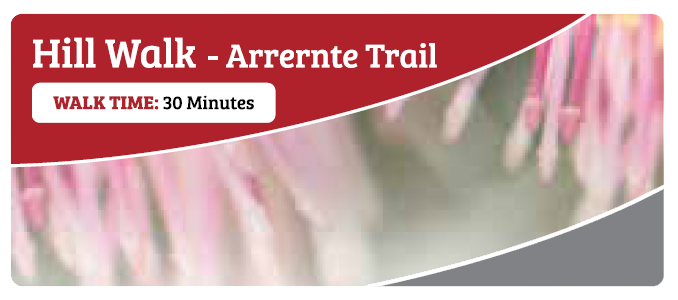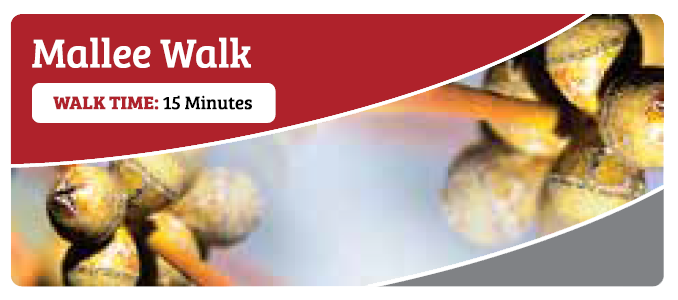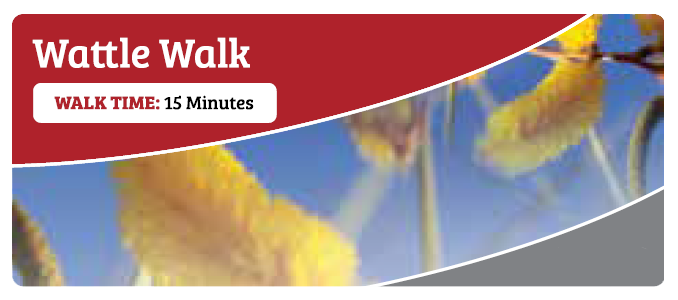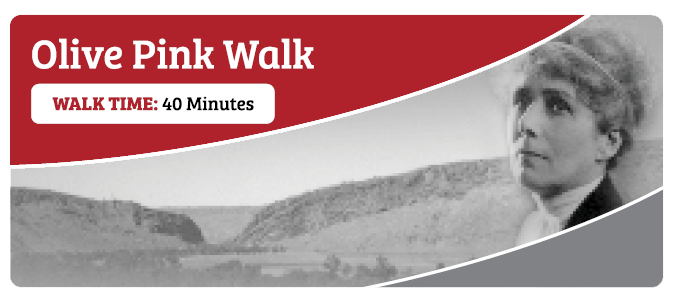Hill Walk
This self-guided Hill Walk – Arrernte Trail will introduce you to a number of the native plants that grow in the rocky hill habitat of the region.

Many of these plants have evolved to tolerate drought. Some, known as ‘resurrection plants’, do so by dying back and regenerating from rootstock or tubers once rain falls again.
Please make sure you take water, have appropriate footwear for the rocky path and supervise children. There is a sign at the top of the hill outlining the importance of this site to the Arrernte people.
We ask visitors to keep to the path and respect this important cultural site, Tharrarletneme (Annie Meyers Hill).
Allow 30 minutes return.
Mallee Walk
This self-guided walk will introduce you to a number of mallees that grow in Central Australia.

Mallee is the name given to multi-stemmed trees which belong to the gum tree genera Eucalyptus and Corymbia (bloodwoods). There are around 1000 different species worldwide, the majority of which occur only in Australia. Mallee was a very common vegetation type across drier parts of southern Australia before extensive clearing for agriculture.
Mallees provide an important source of firewood, timber, gum, honey and Eucalyptus oil. Mallee habitat is critical for many native plants and animals. Unlike other parts of Australia, mallees and other gum trees are relatively uncommon in Central Australia, where wattles predominate.
Allow 15 minutes.
Wattle Walk
This self-guided walk will introduce you to a number of wattles (Acacia) that grow in Central Australia, where it is the predominant habitat type.

There are over 1000 different wattles in Australia and over 1300 worldwide. The wattle has been regarded as Australia’s national flower since 1901; however it was not until 1988 that Golden Wattle (Acacia pycnantha) officially became our national emblem.
Wattles have been used extensively by Aboriginal people and by European settlers for timber, firewood and food. The seeds of several different species are an important food resource for Aboriginal people, and more recently wattle seed products have been developed for the growing bushfood market.
Allow 15 minutes.
Olive Pink Walk
This self-guided walk is named after the Garden’s founder, Miss Olive Muriel Pink, who lived on site from 1956 until her death in 1975.

During this time Olive Pink successfully campaigned for the area to be declared as the Australian Arid Regions Native Flora Reserve, now the Olive Pink Botanic Garden. This walk will give you an insight into her life as an anthropologist, supporter of Aboriginal rights, conservationist, botanical collector and artist.
Allow 40 minutes.
